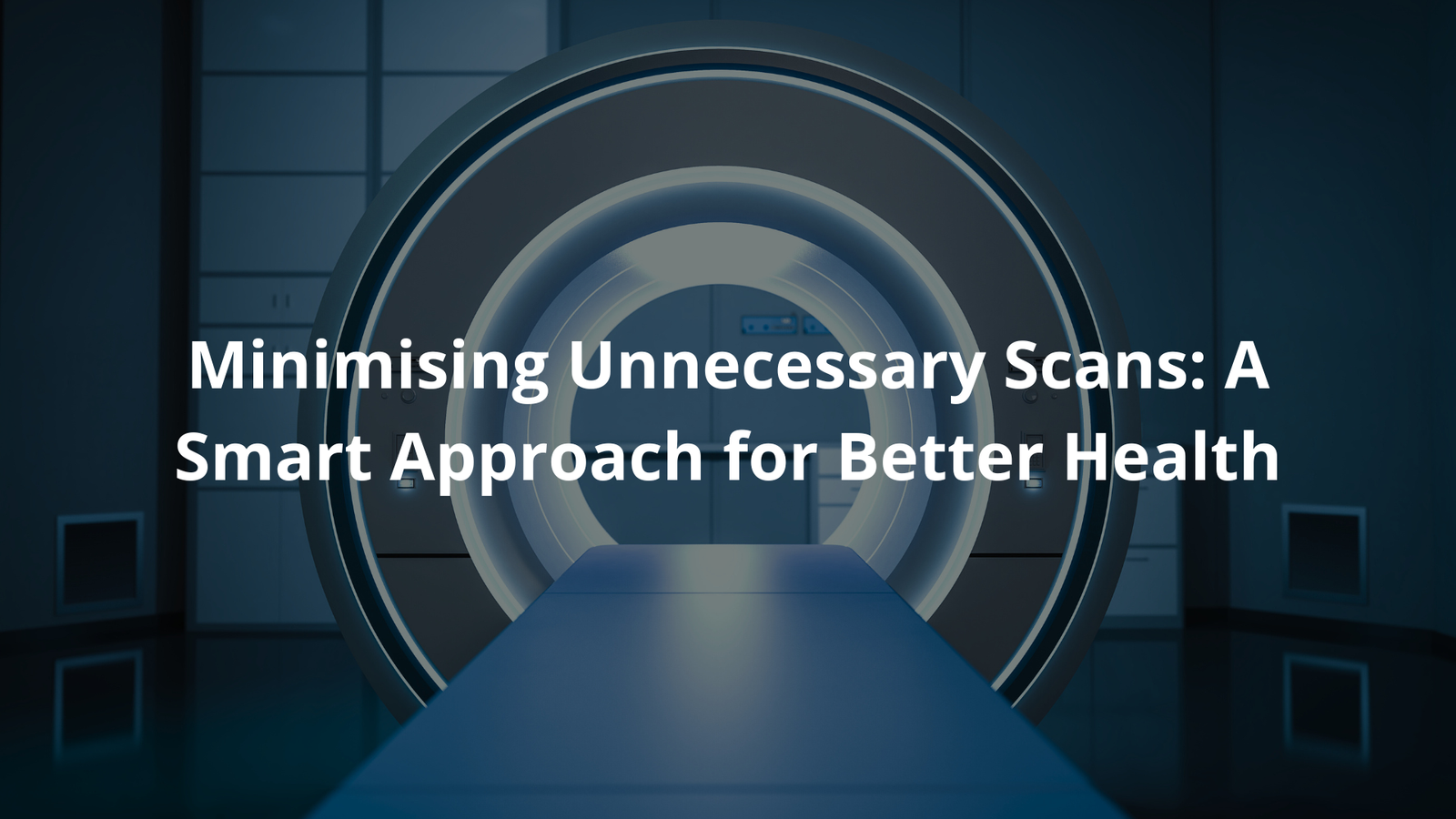This article explores ways of minimising unnecessary scans in Australia while ensuring patient safety and quality care.
In Australia, minimising unnecessary scans matters. Too many X-rays or CT scans mean exposing patients to more ionising radiation. It’s a risk, especially for younger folk. Doctors are working to reduce these scans. They only order them when really needed. Think judicious use.
Cutting back on extra imaging (like MRIs) can save money, too. Every little bit counts. Less waste means more resources for other healthcare needs. For example, sometimes a good physical exam is enough; doesn’t always require a scan. It is about finding that balance. It probably is a good way forward.
Want to know more? Keep reading.
Key Takeaway
- Reducing unnecessary scans can protect patients from extra radiation.
- Educating doctors about proper imaging requests is crucial.
- Saving money in healthcare can happen by cutting out unnecessary tests.
The Importance of Justification for Scans
Radiographers, those clever professionals who capture the inner workings of our bodies, don’t just go about ionising people willy nilly. They’ve got to pause and ponder, “Will this scan genuinely benefit the patient?” Its a fair question. If the scan doesn’t, then theres really no good justification to do it.
These radiographers have got to follow a strict process, like making sure they minimise radiation, the dose has to be as low as achievable. Its all about patient safety.
To ensure things stay on the up and up, the Medical Radiation Practice Board of Australia (MRPBA), and the Australian Radiation Protection and Nuclear Safety Agency (ARPANSA) offer guidance. Think of them like experienced mentors, you know.
- MRPBA: Oversees the registration and standards of practice for radiographers.
- ARPANSA: Sets the radiation safety standards.
But why all the fuss? Well, extra radiation exposure ain’t good for anyone, and every little bit adds up. Guidelines make sure patients aren’t exposed to radiation unnecessarily. After all, peace of mind is something you can’t really put a price on.
Educating GPs About Imaging Requests
General Practitioners are often the first port of call when someone needs a scan. These fine doctors hold the reins when it comes to ordering these imaging tests. But theres been a concerted effort in Australia, a real push to educate our GPs on the whens and whys of diagnostic imaging.
And its important work, really.
Think of it this way, the Chief Medical Officer of Australia, they’ve reached out to GPs who are ordering more than their fair share of scans. The aim? To get them pondering if these scans are genuinely needed. Sometimes, doctors are just trying to cover their backs, a practice they call defensive medicine. But if they get proper learning, they may be able to be more selective.
- Education Programs: Designed to make GPs think about each case.
- Guidelines: Clear rules for when a scan is really needed. [1]
The fewer scans, the less radiation exposure. Educating doctors can dramatically influence how often scans get requested, really. So in the end, it’s all about making sure patients get the best care possible, without any unnecessary risks. And that’s a goal worth shooting for.
Patient Safety and Quality Care

Patient safety, its paramount. Lets talk about unnecessary scans, lets not beat around the bush here.
Too many CT scans ain’t a good thing, and theres a few good reasons why. The amount of radiation that patients are exposed to is the main risk. Then theres also potential reactions to the contrast dye that they use in some of these tests. Its a delicate balance, getting patients the tests they need, but without causing harm.
Doctors and radiographers need to team up, sharing ideas and following the guidelines that have been made. Together, they can help to keep patients safe, while still getting all of the necessary information to help with any diagnoses.
- Radiation Risks: CT scans expose patients to ionising radiation, raising risk of cancer, though slightly.
- Contrast Reactions: Allergic reactions to dyes, used to see insides, may sometimes occur.
Finding the middle ground, thats the trick. Getting the right tests done, without overdoing it. Its the responsibility of the radiographers and doctors, ensuring that the scans done are the best, and the safest.
The Economic Side of Things
Cutting down on scans, particularly ones that are not needed, could save a lot of money for the healthcare system. Studies, and things, like reports, have shown that savings could be significant, especially if you look at post surgery scans.
There are some serious savings to be made.
Think about this, if a patient doesn’t need a follow up X ray after they have gotten stitches, thats one less scan that you have to pay for. By being smart, the healthcare system can spend the resources on things that really do matter. Its a smart thing to do, and helps them be more strategic.
- Resource Efficiency: Less scans, less money spent on unnecessary tests.
- Smarter Spending: Savings can go towards stuff that matters more. [2]
Being smart with how the money is spent. After all, every dollar saved on unnecessary scans is a dollar that can go towards improving care, or helping patients that genuinely need it.
The Role of RANZCR
Lets not forget the Royal Australian and New Zealand College of Radiologists (RANZCR). These folks are important, they really are. They work to ensure folks are only getting the medical scans they truly require. They talk a lot about the importance of accessing MRI tests, which is something important to think about.
RANZCR thinks that making MRI tests more accessible would lead to more choice, and more accurate diagnoses. They remind us that its essential to cut down on scans, and that patients still have access to lifesaving tests. After all, patients should come first.
- Improved Access: More accessible MRI, more accurate diagnosis.
- Essential Tests: Dont cut back too much, make sure people can access important tests.
It all comes down to having the right tools. By ensuring access to MRI tests, RANZCR aims to improve patient care, whilst making sure only the scans necessary are done. Its all about striking the right balance, for the best outcomes.
Working Together for Better Imaging
Credits: School of Public Health and Preventive Medicine
Doctors, radiographers, patients, everyone needs to work together to make imaging decisions. You know, get on the same page. The decisions made should be a group effort.
There’s a bunch of tools out there, clinical support tools for example. These tools help doctors with the decision making, taking into account the patients situation.
- Educate healthcare providers on proper imaging: Make sure everyone’s on the same page.
- Use clinical decision support tools for better choices: Get the latest info for your clinical decisions.
- Foster communication between doctors and radiographers: Talking is key.
The trick is, communication. Talk between radiographers and doctors. It sounds simple, but it has a big impact. By having these steps in place, patients will get the correct treatment, and that’s the most important thing.
Patient Education on Imaging Risks
Patients can play a big role in all this too, and that’s important to note. It’s important that they understand the risks involved in any scans, especially the unnecessary ones. By being aware, they can ask their doctors if the scan is really needed. Being more informed means they’re more likely to make decisions that are best for them.
Patients who are told they need to get a scan, they should ask, “Is this really necessary?” or “What are the risks involved?” Asking these types of questions can help make sure that they only go through with scans that they actually need. Knowledge is power, innit?
- Understand Risks: Being aware of the risks, helps people to make smart decisions.
- Ask Questions: Patients can ask questions when a doctor recommends a scan.
The more patients know, the better, really. It puts them in a position to make informed decisions with their doctors, and it ensures the quality of their treatment is as good as it can be. So don’t be afraid to ask those questions!
Emphasizing Imaging Request Justification
Lets talk about requests for imaging. Doctors should really think before ordering any scans. They should ask themselves, do the benefits outweigh the risks? Is this really something that the patient needs, or is it unnecessary?
This might include looking at the patient’s history, symptoms, etc. Maybe talk to a specialist, or do an exam first. Doing a bit more work beforehand, its likely that many unnecessary scans can be reduced.
- Benefit vs. Risk: Before ordering a scan, consider the benefits, but also consider any of the possible risks.
- Other Options: There might be other ways to diagnose the patient, like talking to a specialist or physical exam.
So, before ordering any scans, doctors should take the time to make a judgement call. Weighing the pros and cons is important. If everyone works together and keeps patient safety the number one priority, then people are going to be safer, and healthier. Its all about getting the best results for the patient.
FAQ
How can GPs improve their imaging request patterns?
GP education on imaging appropriateness plays a critical role in reducing unnecessary scans. By implementing clinical decision support tools and following imaging referral best practices, doctors can make more informed choices. Radiologist-GP collaboration and imaging request feedback systems help improve diagnostic accuracy. Understanding imaging appropriateness criteria and participating in peer review processes can significantly reduce overutilisation of diagnostic tests.
What are the risks associated with unnecessary medical imaging?
Ionizing radiation risks are a significant concern with repeated medical scans. Unnecessary imaging can expose patients to potential harm, including increased cancer risk from CT and X-ray procedures. Cost-effective diagnostic strategies and radiation dose reduction techniques are essential. Patient-centered imaging decisions should prioritise minimising radiation exposure while maintaining diagnostic quality, especially for vulnerable groups like children.
How does the Australian healthcare system address imaging overuse?
The Australian healthcare system is tackling diagnostic imaging waste through multiple strategies. The Australian Atlas of Healthcare Variation and Choosing Wisely Australia provide insights into imaging utilisation trends. Medicare Benefits Scheme reviews and imaging stewardship programs aim to optimise resource allocation. Implementation of Australian imaging guidelines and awareness campaigns help reduce unnecessary scans across primary care settings.
What alternatives exist to reduce unnecessary imaging?
Clinically appropriate imaging involves exploring alternatives to traditional diagnostic scans. CT scan alternatives like ultrasound or MRI can often provide necessary diagnostic information with lower radiation risks. MRI appropriateness criteria and patient-specific imaging protocols help healthcare providers make more targeted decisions. Understanding the diagnostic accuracy of different imaging methods is crucial for reducing unnecessary tests.
What economic impacts do unnecessary scans have on healthcare?
Unnecessary imaging carries significant financial consequences for the healthcare system. The economic impact includes direct costs of tests, potential follow-up procedures, and resources wasted on unwarranted investigations. Healthcare resource optimization and diagnostic imaging cost containment strategies can help reduce these unnecessary expenses. Implementing imaging utilization benchmarking can identify and address inefficient practices.
How can patients be more involved in reducing unnecessary scans?
Patient education on imaging risks is crucial for informed healthcare decisions. Understanding the potential consequences of unnecessary scans empowers individuals to have meaningful conversations with their healthcare providers. Patient-centered imaging decisions involve discussing the necessity of tests, potential alternatives, and radiation exposure risks. Being proactive and asking questions can help reduce unnecessary medical imaging.
Conclusion
So, minimising unnecessary scans in Australia takes teamwork, education, and smart choices, really. Focusing on patient safety, the scans should be needed, and beneficial for the patient. Lets ask questions, and learn how to do better healthcare! After all, it’s essential to be smarter and work together, cutting down unnecessary imaging, while keeping high quality care. That way, all scans done are needed and useful to the patient. And that’s what matters in the end, don’t you think?
References
- https://www.health.gov.au/resources/publications/reducing-overuse-of-diagnostic-imaging-project-report?language=en
- https://pmc.ncbi.nlm.nih.gov/articles/PMC5587654/




